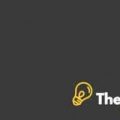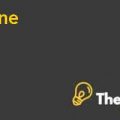INTRODUCTION
The measurement of the performance of the PepsiCo over the last 10 year has been performed in this paper. PepsiCo is engaged in soft drink and food related businesses including snack foods, soft drink and fast-food restaurants. PepsiCo has three main business segments that are snack foods, soft drink and fast food restaurants. PepsiCo has invested about 40% capital in the fast food restaurant segment within last two years as it is growing and it is the profitable segment, even though income from this segment is just crossing the income of the soft drink segment, which is PepsiCo’s core business segment. The biggest acquisitions of the PepsiCo are Pizza Hut and Kentucky Fried Chicken (KFC).
Pizza Hut is not only covering 24% share in the U.S market, but also serving globally in 54 different countries. KFC just opened its 3,000th restaurant outside the United States in 1989, with the opening of this branch KFC expanded to the largest restaurant chain throughout the world and it is the number one fast food restaurant. The primary corporate object of PepsiCo is to maximize the value of its shareholders by expanding its business and proving a good return on investments.
DAIGNOS IS OF THE PROBLEM
PepsiCo is highly profitable growing company. It always tries to make its investors happy through investing and acquiring the businesses, and by having better returns. However,McCartthas identified through his research that PepsiCo uses the corporate weighted average cost of capital (WACC) of 11% to evaluate the projects. Every business has a different risk and return profile. McCart wanted to measure each business segment’s WACC to identify that whether the sum of three cost of capital’s weight is equal to the 11% WACC or not. He also wanted to see the performance of the PepsiCo over the last 10 years and the value that it has created for its shareholders as claimed in the annual report.
ANALYSIS
In this analysis, the performance of PepsiCo has been evaluated in the 10 years and the value that it has created for its shareholders on their investment from 1981 to 1990, by using ratio analysis. The WACC for each segment and the overall WACC of PepsiCo is also calculated.
Question 01
The performance of PepsiCo has been calculated by using ratio analysis.The ratios are computed in the exhibit. The profitability ratio has performed through this period. The gross income ratio was 12% in 1990; it increased by 20% since 1981. The operating income ratio was 9% in 1990, it also increased by 12.5% since 1981. The net income ratio was 6% in 1990, it also increased by 20% since 1981. Therefore,the overall profitability increased in this period and this is a positive sign for the company and investors as well. The activity ratio did not perform well, as the asset turnover ratio is 1 and it decreased by 50% since 1981. PepsiCo has been investing and purchasing businesses through the period, therefore this can decrease the asset turnover ratio.
PepsiCo Inc, Cost of Capital Case Solution
In the financial leverage, the total debt to equity ratio is 0.4 and it has increased by 34% since 1981, which is good for the PepsiCo. The interest coverage ratio is 2.4 and it has decreased by 28%since 1981, which in not good for the company.
The ratio related to the return to shareholders is also calculated in the exhibit. The dividend payout ratio is 27% and it decreased by 36% since 1981. However, its market price has been changed positively.
The return on equity is 22% now and it has doubled than the market return of 10% (Exhibit 7).
Question 02
PepsiCo operates within three business segments that include snack foods, soft drink and fast food restaurants. The weighted average cost of capital of each segment is calculated in the exhibit. In order to calculate the WACC, first of all the leverage ratios of all such segments are calculated. After that, the a set beta of the comparable companies operating within the same market is considered. The average asset beta is then re-geared with the optimal capital structure of each segment. As a result,the equity beta of 1.16, 1.24 and 1.38 calculated for snack foods, soft drink and fast food restaurants respectively.
The cost of equity is then calculated as 10.9%, 11.3% and 10.1% for snack foods, soft drink and fast food restaurants. The cost of debt for each segment is taken from Exhibit 8. Based on the respective capital structure of each segment, the WACC is calculated as 9.4%, 9.8% and 8.6% for snack foods, soft drink and fast food restaurants...........................
This is just a sample partial case solution. Please place the order on the website to order your own originally done case solution.









